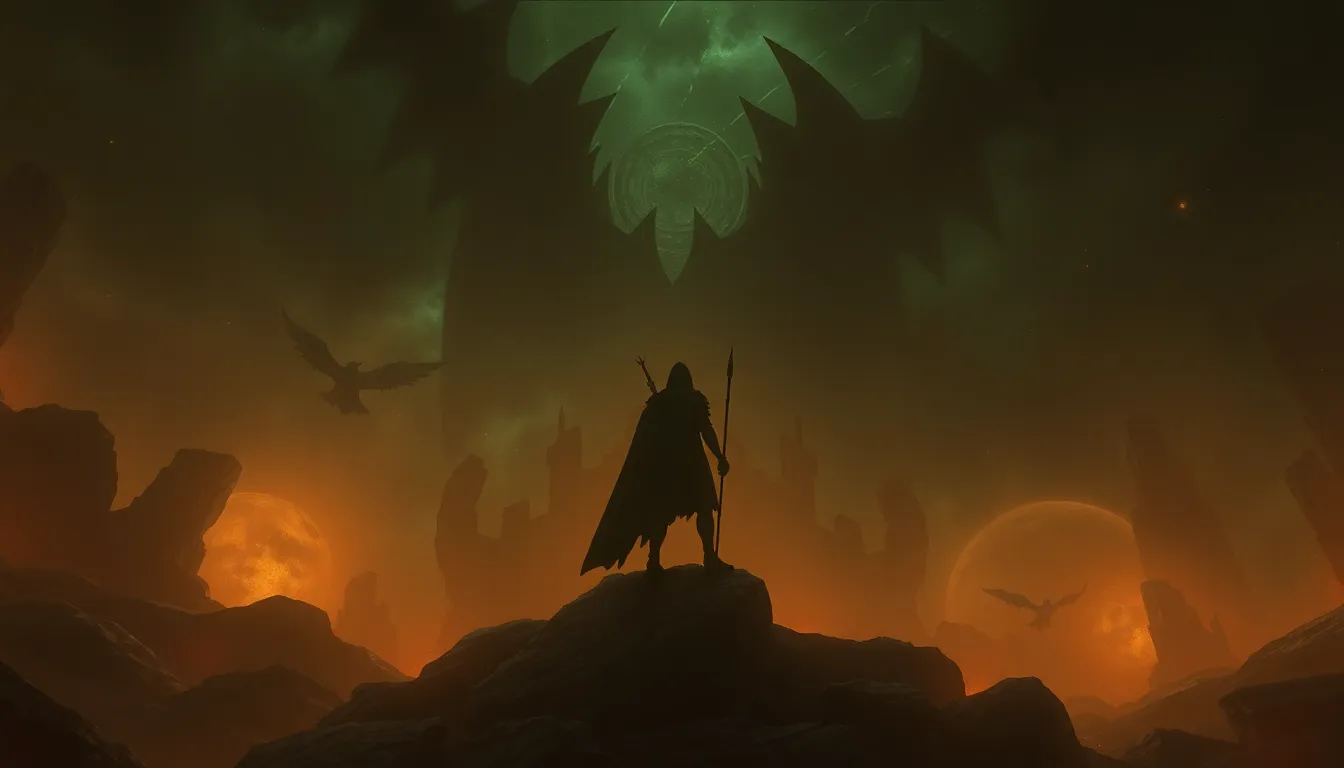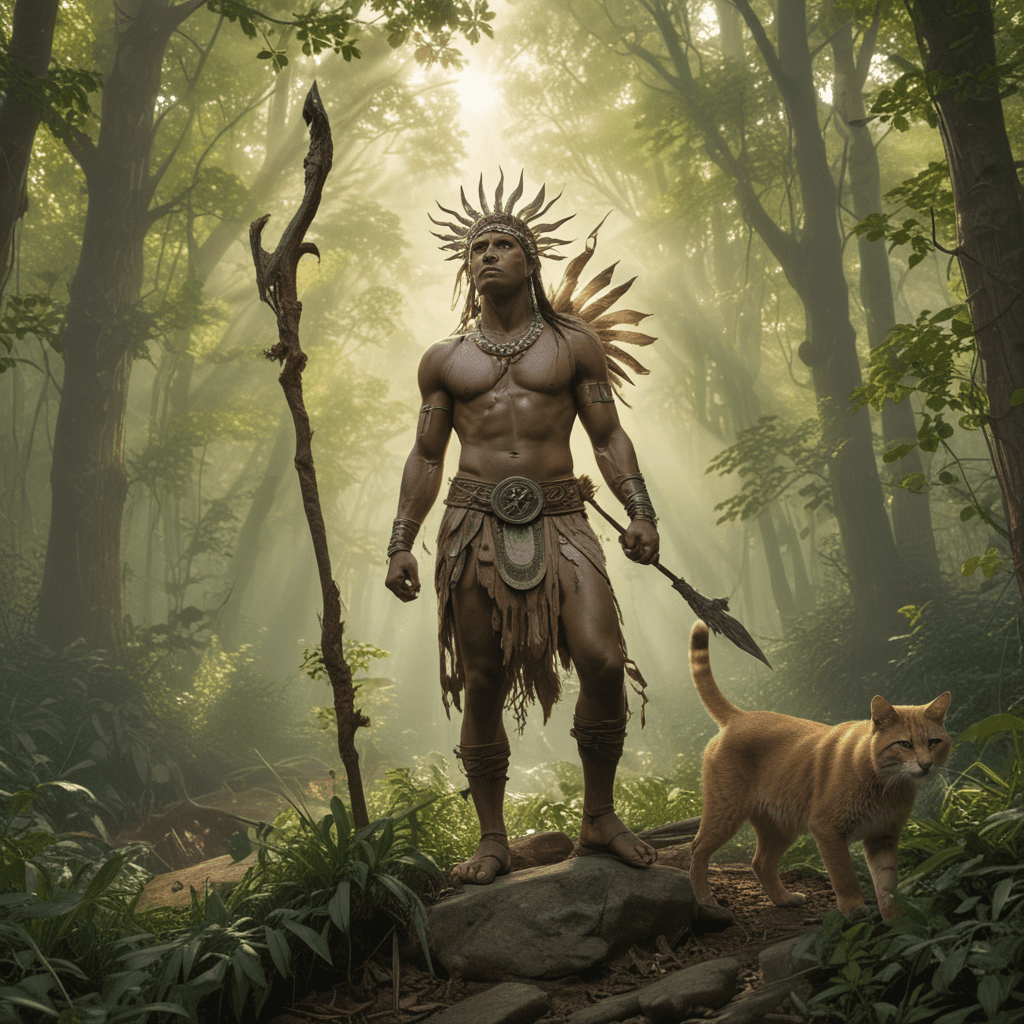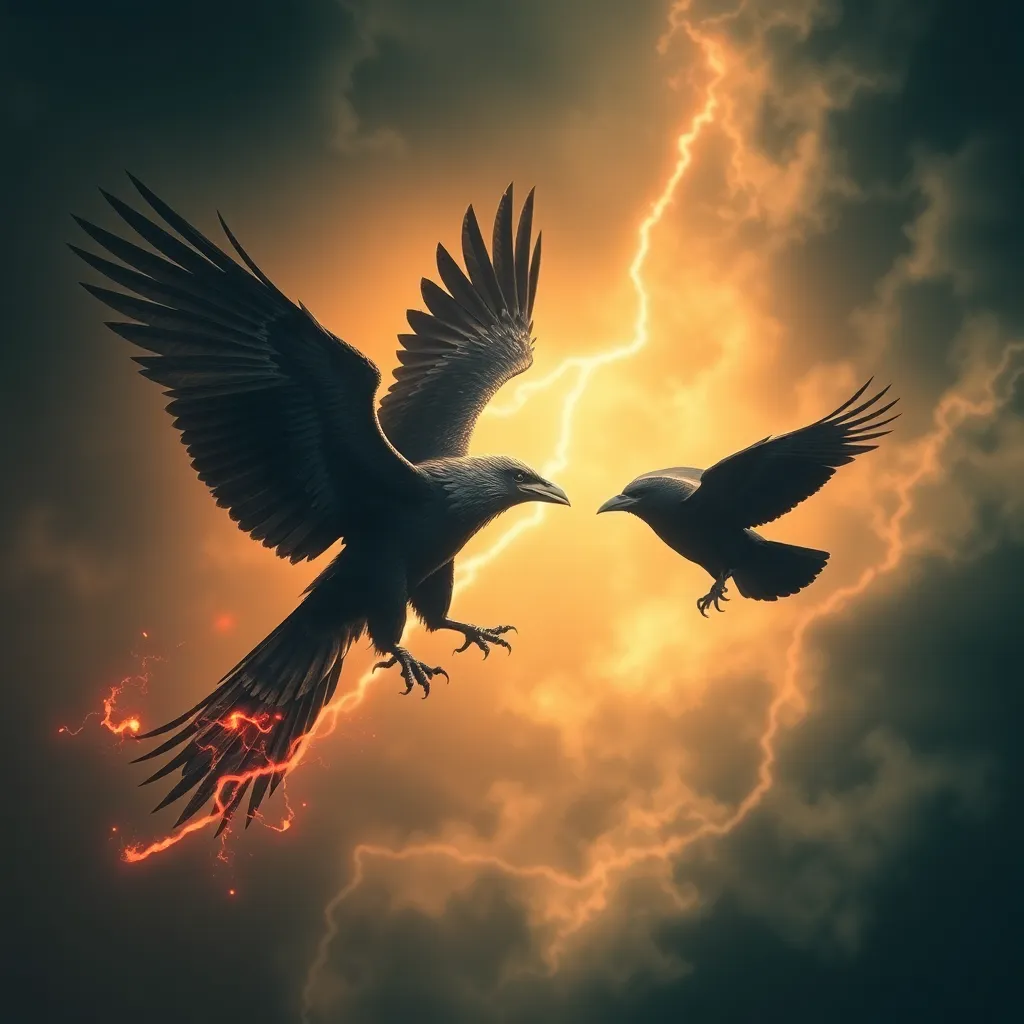The Dragon’s Bite: Níðhöggr’s Role in Global Mythology
I. Introduction
Níðhöggr, a prominent figure in Norse mythology, is a dragon that gnaws at the roots of Yggdrasil, the world tree, symbolizing decay and destruction. This fearsome creature embodies many of the themes associated with dragons across different cultures, such as power, chaos, and the cyclical nature of life and death. In this article, we will explore Níðhöggr’s influence on global mythology and draw parallels with other dragon figures from various traditions.
II. Níðhöggr: The Dragon of the Underworld
Níðhöggr is often depicted as a monstrous dragon residing in Hel, the Norse realm of the dead. Traditionally, he is characterized by his serpentine form and his relentless gnawing at the roots of Yggdrasil. This act not only signifies his destructive nature but also highlights his role in the Norse cosmology.
A. Description and characteristics of Níðhöggr
Níðhöggr is described as a large and fearsome dragon, often associated with decay and the decomposition of life. His presence at the base of Yggdrasil symbolizes the destructive forces that are necessary for renewal and rebirth.
B. Role in the Norse cosmology and Yggdrasil
Within Norse cosmology, Yggdrasil is the axis mundi, connecting the nine realms. Níðhöggr’s constant gnawing at its roots signifies a threat to the stability of the universe, emphasizing the delicate balance between creation and destruction.
C. Symbolism of decay and destruction
Níðhöggr embodies the inevitable decay that accompanies life. His actions serve as a reminder of the transient nature of existence, as he plays a crucial role in the cycle of life and death.
III. Thematic Connections: Dragons as Guardians and Destroyers
Dragons often occupy dual roles in mythology, acting as both guardians and destroyers. This duality is evident in the stories of Níðhöggr and other dragon figures around the world.
A. The dual role of dragons across various cultures
Across cultures, dragons can be seen as:
- Guardians of treasure and sacred knowledge.
- Symbols of chaos and destruction.
- Representatives of transformation and change.
B. Comparison with other mythological dragons (e.g., Tiamat, Fafnir)
Other notable dragons in mythology include:
- Tiamat: The primordial goddess and dragon from Babylonian mythology, representing chaos and creation.
- Fafnir: A dwarf turned dragon in Norse mythology, symbolizing greed and the destructive nature of desire.
C. Níðhöggr’s embodiment of the cycle of life and death
Níðhöggr stands as a testament to the cyclical nature of existence, illustrating how destruction is intertwined with life, and how both are essential for cosmic balance.
IV. Níðhöggr and the Concept of the Underworld
Níðhöggr occupies a significant place in Hel, the Norse underworld, where he represents the darker aspects of existence.
A. Níðhöggr’s place in Hel and the Norse afterlife
In Norse belief, Hel is not merely a place of punishment but a realm where the dead reside. Níðhöggr’s presence signifies the inevitability of death and the importance of facing it.
B. Comparison with underworld dragon figures in other mythologies (e.g., Aztec Quetzalcoatl, Chinese Long)
Dragons in other mythologies also represent the underworld:
- Quetzalcoatl: The feathered serpent god of the Aztecs, associated with creation and the afterlife.
- Long: The benevolent dragon in Chinese mythology, symbolizing strength and power, but also associated with water and the underworld.
C. The significance of the underworld in cultural narratives
The underworld often serves as a space for transformation and rebirth in many cultures, emphasizing the importance of this realm in the human experience.
V. Cultural Interpretations and Artistic Representations
Níðhöggr has inspired numerous artistic interpretations and cultural references throughout history.
A. Níðhöggr in Norse art and literature
In Norse art and literature, Níðhöggr is often depicted in carvings, runes, and sagas, symbolizing the fear and respect associated with death and decay.
B. Influence on modern interpretations in films, books, and video games
In contemporary culture, Níðhöggr has been featured in various media:
- Films that depict Norse mythology.
- Books that explore fantasy realms.
- Video games that integrate mythological themes.
C. Exploration of Níðhöggr in contemporary cultural contexts
The themes associated with Níðhöggr resonate with modern audiences, reflecting ongoing fears and aspirations regarding death, transformation, and the environment.
VI. The Symbolism of Níðhöggr’s Actions
Níðhöggr’s actions, particularly his gnawing at Yggdrasil, carry deep metaphorical meanings.
A. The act of gnawing at the roots of Yggdrasil: metaphorical interpretations
This act can be seen as a representation of:
- The inevitability of change and decay.
- The destructive forces that accompany growth and renewal.
- The impact of humanity’s actions on the natural world.
B. Connections to environmental themes and human destruction
Níðhöggr’s relentless chewing at Yggdrasil serves as a metaphor for human environmental destruction, highlighting the consequences of neglecting our planet.
C. Níðhöggr as a representation of inevitable change
Ultimately, Níðhöggr embodies the idea that change and decay are unavoidable aspects of life, serving as a reminder of the transient nature of all things.
VII. Comparative Mythology: Níðhöggr and Other World Dragons
A comparative analysis of dragon mythologies reveals both unique characteristics and shared themes.
A. Overview of dragon mythologies worldwide
Dragons appear in various forms across cultures, from the fearsome European dragon to the wise and benevolent Asian dragons.
B. Similarities and differences in roles and symbolism
While dragons often symbolize chaos and power, their roles can vary:
- In some cultures, they are protectors of wisdom and guardians of treasure.
- In others, they represent destruction and chaos.
C. The impact of cultural exchange on dragon myths
Cultural exchange has influenced dragon myths, resulting in a rich tapestry of interpretations that reflect human fears, aspirations, and values.
VIII. Conclusion
Níðhöggr holds a significant place in mythology, serving as a powerful symbol of decay, transformation, and the inevitable cycle of life and death. Through the exploration of Níðhöggr and other dragon figures, we can see the universal themes that resonate across cultures, reflecting humanity’s fears and aspirations. The enduring legacy of Níðhöggr reminds us of the delicate balance between creation and destruction and the importance of understanding our place within the larger cosmos.
</body



